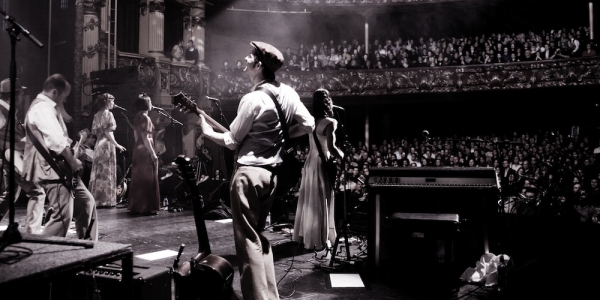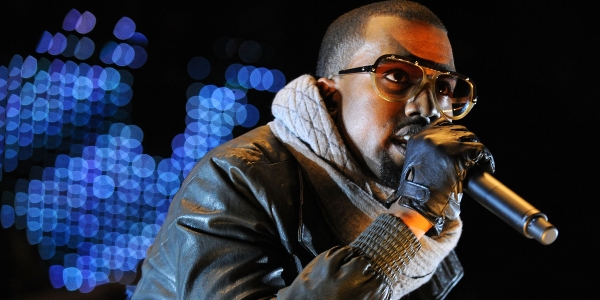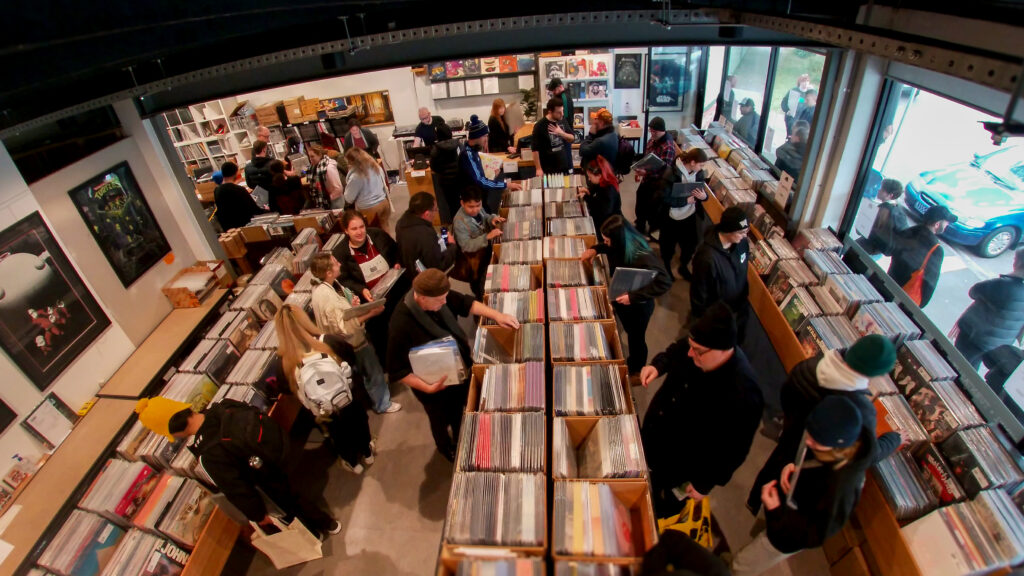Like most great ideas, Fly My Pretties was dreamt up in the confines of an Irish pub, where Weir and Fabulous were mulling over ways to expand the idea of what live music can achieve. Fabulous recalls, “[Weir] said to me, ‘I got this idea – why don’t we put all these talented people together in a collaborative process, and record it live in a musical theatre environment?’ and I said, ‘Well, OK then, let’s give it a shot!’
“We had Toby Laing from Fat Freddy’s Drop and Sam Scott from The Phoenix Foundation, and a couple of guys from Flying Nun bands – a real mishmash of people, and it really rocked.”
Weir concurs. “I wanted to get together an unlikely bunch in a band together and perform more of a showcase in a theatre environment, as opposed to just a bar and music venue, give it a more theatrical element, and call on visual artists. So it was the concept then to record a live album. It was also a great way to promote undiscovered talent – or at least unknown talent at that time – it’s a great musical showcase!”
Thinking about the vast number of musicians, each with their own style and method of writing music in a wildly disparate miasma of influences and genres, it practically boggles my mind. I make sure to ask Fabulous how he goes about collecting the music to be used in their larger than life productions.
“It’s all due to new technology,” he reveals, somewhat proudly. “We’re using SoundCloud this time, so we have a private SoundCloud page that we’re administering. Currently it has 27 songs on it, and they’re all brand new demos: they could have been made in a kitchen in London, a lounge in Paris, or all over the world; or, they’ll be well-made in a studio. But they’re all brand new songs and there’s still more to come, so we’ll end up with about 30-35 songs. We’ll whittle those down to the final 15 in the set, but at the same time give every songwriter in the group at least one song each.”
I ask Weir about the responsibilities inherent in being a de facto bandleader. What exactly does he do to get this whole mess of musicians working together like a seamless act? “Well,” he states, “I think the show has developed a lot since [2004], those days in a small theatre in Wellington to bigger theatres and now our first time in Melbourne. I think what people expect from me is to artistically curate the show, encourage people to bring me new tunes, and to talk to them about how it’s going to be put together.
“But as a bandleader, I need to represent everyone as best I can, and keep the lines of communication open, and encourage people to come up with new music and share ideas. But I do need to lead it, so I choose who’s going to be in it, and they have to have faith in me that a) it’ll be a professional production, b) they get paid and c) they feel that artistically they can bring whatever they want to the project, because I don’t want to be telling people what to do; it’s up to them how they want to represent themselves.”
One element of the Fly My Pretties extravaganza that will most certainly be a highlight is the Epicentre Guitar. One of seven one-of-a-kind guitars that were lovingly created by the New Zealand charity Heart Strings from rubble of the February quake that struck Christchurch, decimating the city’s cultural and artistic centre. The guitars will all go up for auction in late November.
Weir says, “Yes, [Heart Strings] are amazing; they made seven guitars out of different bits of wreckage and heritage buildings that were destroyed. Now, I support Christchurch, and you can donate money and help, and a lot of the money is going to the rebuilding of individual homes and streets, the infrastructure; [but] this was a chance to give something to help the artistic community, which was damaged quite severely by the quakes. It took away spaces for artists, venues to play in, and galleries to exhibit in – and so this specifically gives to that community and will raise money, so we’re lucky enough to play the Epicentre Guitar in our show and tell its story and hopefully they’ll raise some good money from them!”
I just have to ask – does the Epicentre Guitar play as beautifully as it looks? Weir laughs and agrees that yes, yes it does. “It sounds really good. It’s like a Fender Stratocaster cut; the wood is fantastic, and it has five different cuts from different parts of Canterbury buildings and it’s well-crafted, and it sounds great.”
BY THOMAS BAILEY







